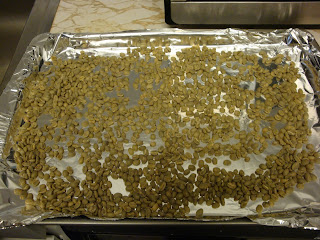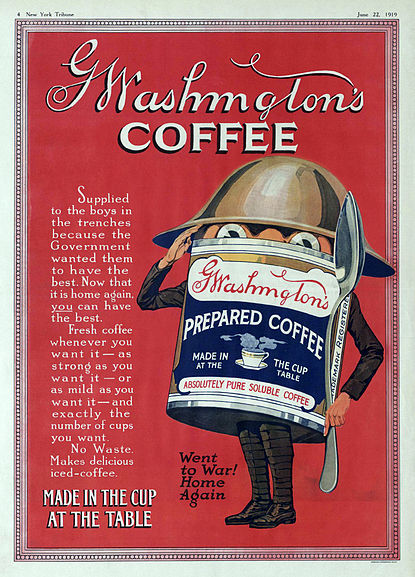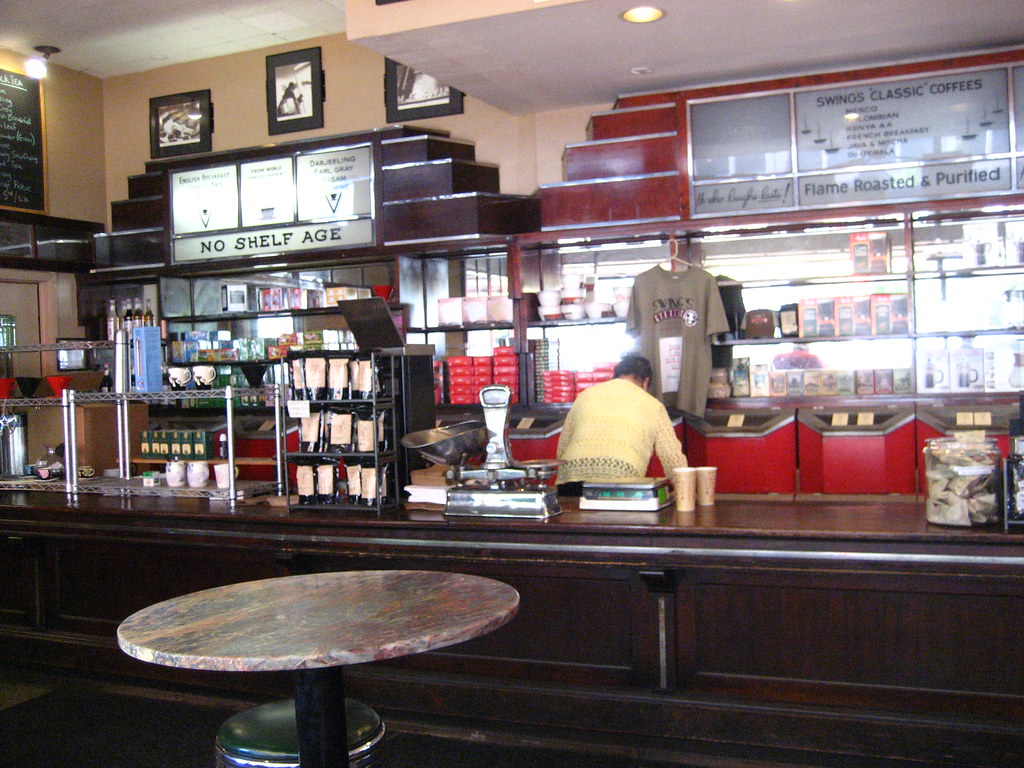
All roads of coffee love lead to roasting. Coffee love typically starts with a french press, spreads with the burr grinder and espresso maker, and becomes terminal when roasting coffee begins. I and many others have reached this stage. In this post, I want to tell Metro Espresso readers on how to roast green coffee in a typical kitchen oven.
What are the benefits from roasting your coffee rather than buying it at the store?
1. The freshest, most flavorful coffee possible.
2. It is cheaper! 1lb of unroasted coffee is ~6 to 7 dollars.
3. Begin a fun hobby that most everyone can relate to. (Roasting coffee is more socially acceptable than making boats out of soap. Less creepy too!)
What you will need:
1. One pound of green coffee. Green coffee simply denotes that it is unroasted.
2. One medium-sized baking sheet. I use one that is 10 3/4 in x 17 in.
3. Tin foil
4. Two metal colanders preferably, though only one is needed.
5. Wooden spoon or plastic spatula
6. Oven mitt
7. Stop watch
8. A sense of adventure!
Directions:
1. Assemble your materials and preheat the oven to 460-500 degrees. I prefer around 465, as it is a slower roast and lets you judge when you want the beans out of the oven. At a higher temperature, the roasting happens too quite quickly for me.
Wrap tin foil around the baking sheet. This allows for quick clean up and a visual contrast to let you see the browning of the bean. Also, be sure to have your two colanders handy. Place one in a dry sink, this will allow you to dump the roasted beans quickly without fearing a small mess. Preparation is key when roasting coffee. A well laid out workstation aids quality roasting, tools within reach, and a quick transfer from the oven to the outside.


2. Place approximately .5 lbs of the green beans onto the sheet. Spread them evenly so it is one bean thickness.

3. Place the sheet in the oven and start a stopwatch. Roasting coffee in an oven takes from 9 to 12 minutes. Every 3 minutes or so, stir the beans quickly using your spatula or wooden spoon to ensure a relatively even roast. The oven is not heated uniformly. I find that initially I can wait 4 or so minutes before I stir, but in the 6th minute onwards I stir every 2 minutes. Do no worry so much about timing, but what you see in the oven.
It's about feel!When one roasts coffee, there is what is called the "first crack" and the "second crack." The first crack occurs 6-7 minutes with an audible popping noise. This is a light medium roast, also known as a City roast. After the popping has stopped, you may pull out the beans at any time. They have sufficiently roasted. The second crack is a darker roast, where the beans make a quicker, but softer popping noise similar to a crackle. Roasting beyond this point makes it a Vienna roast, which is quite dark. It depends on the coffee bean you are roasting, but I recommend pulling out the beans somewhere at or between the two cracks.

(Above: Roasting ~3 minutes: Notice the slight brown)

(~8-9 minutes: Quite brown. Beyond the first crack. This has roasted past a "City roast.")
4. When the beans have roasted to the desirable level, pull the sheet out as quickly, but safely, as possible. Dump the beans into the colander in the sink, and rush outside to cool the beans. Despite you taking them out o

f the oven, the beans are still roasting internally. Taking the second colander, you can pass the beans between the two allowing the cool air to stop the beans from roasting any further, and allow all the coffee chaff to blow away. Coffee chaff are small papery husks on the coffee beans that are shed during the roasting process. Continue to swap the coffee between the colanders for a minute.


5. Put into an air tight container, but do not clamp it shut. Freshly roasted coffee emits CO2 for a day and must be allowed to escape. After 24 hours, close the container and the coffee will be ready for brewing in another 8-10 hours. It is best to wait a day or two as the flavors of the coffee bean mature. The optimum time frame for the roasted coffee to consume is 3-12 days after roasting Afterward, the coffee begins to lose flavor and complexity.
Pictured above is the finished product. A wonderful roast of an Ethiopian blend from Sweet Maria coffee retailers.
Precautions:
1. Open up windows and doors to the outside, have the stove fans on, and make sure the smoke detector is shielded. No matter what, smoke and barley smell accompany the roasting process. Having a well ventilated area helps in keeping the area less smelly and smoky.
2. Do not roast too darkly! Remember, roasting past a French roast, the darkest possible, can catch the coffee beans on fire. If you want to know what a French roast looks like, Bing it!
3. If a fire does occur, opening the oven door allows fresh air into the oven feeding the fire. It is best, to my limited knowledge, to turn off the oven and let it burn itself out. If you follow my tips and pull out the beans at or before the second crack, this should never be a problem.
If I have missed a point, failed to elucidate a technique, or you simply have a wonderful comment or question, please leave a message below. I am learning how to roast, and would love to hear from all the readers of Metro Espresso.














